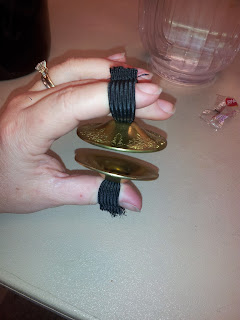For Paulus, at Silk Road Rising, the concept of the show was very theatrical. We felt specifically that two props, a dead baby, and a sacrificial lamb, would be far more effected if we abstracted them from the draped fabric world of the costumes, than if we were to try to create something totally realistic.
Unfortunately I took far fewer photos of the process than I meant to, but the ones I have here should give a good basic idea of what we did.
The first step in something like this is to create a skeleton. We wanted to props to be limp and floppy, but if they had been all fabric, the form would have easily been lost, and the effect wouldn't work. I looked up research images of lamb and human skeletons and cut dowel rods to match some basic skeletal structure. I glued the dowel rod to clothesline, with gaps at the joints to allow free movement at those places.
Next the skeletons were wrapped in a base layer of fabric to hide out structure. I tied shorter knotted pieces at certain joints to prevent them from extending too far in unnatural directions (like tendons).
Here you can see how a lamb leg is tied with tendons so it holds the shape of an actual lamb leg, with joints bending in the proper directions.
Once the structure was in place, it became about tying and twisting many layers of fabric in order to fill out the bodies, and blend them with the world of the costumes. This is roughly what the final baby looked like.
And here is the sacrifical lamb, lashed to a pole to be taken into the temple. The lamb was intended to be all white initially, but didn't look right. The addition of the strips of burlap added definition to the shape and had the added benefit of tying the lamb into the world of the set.































